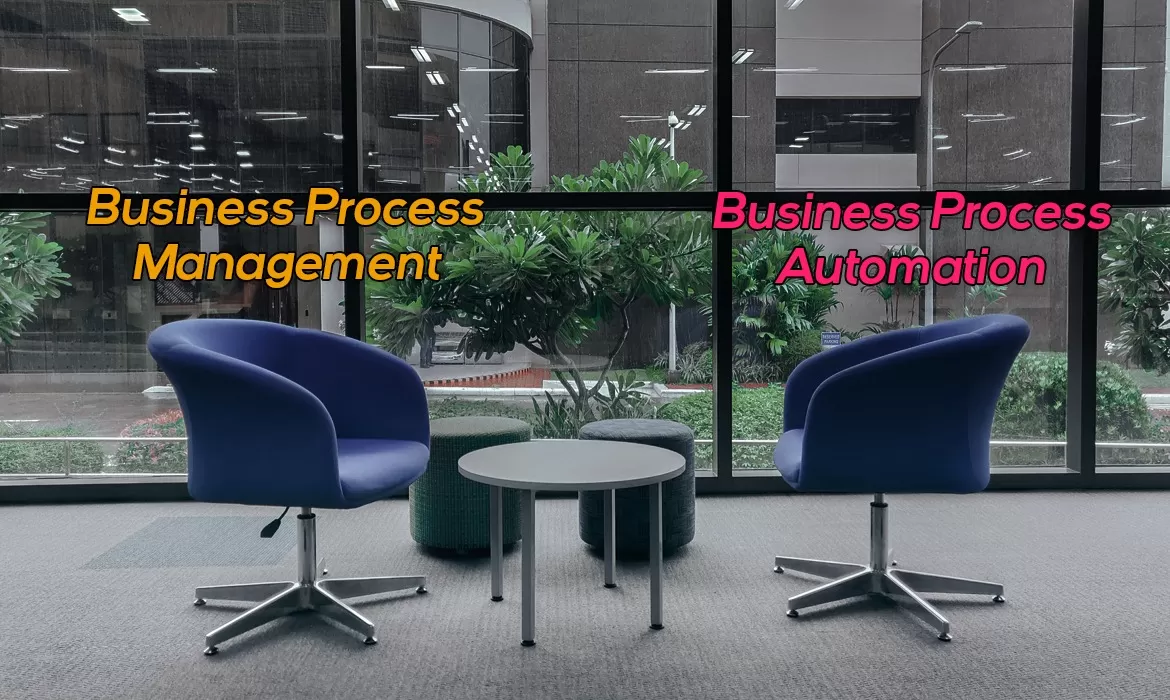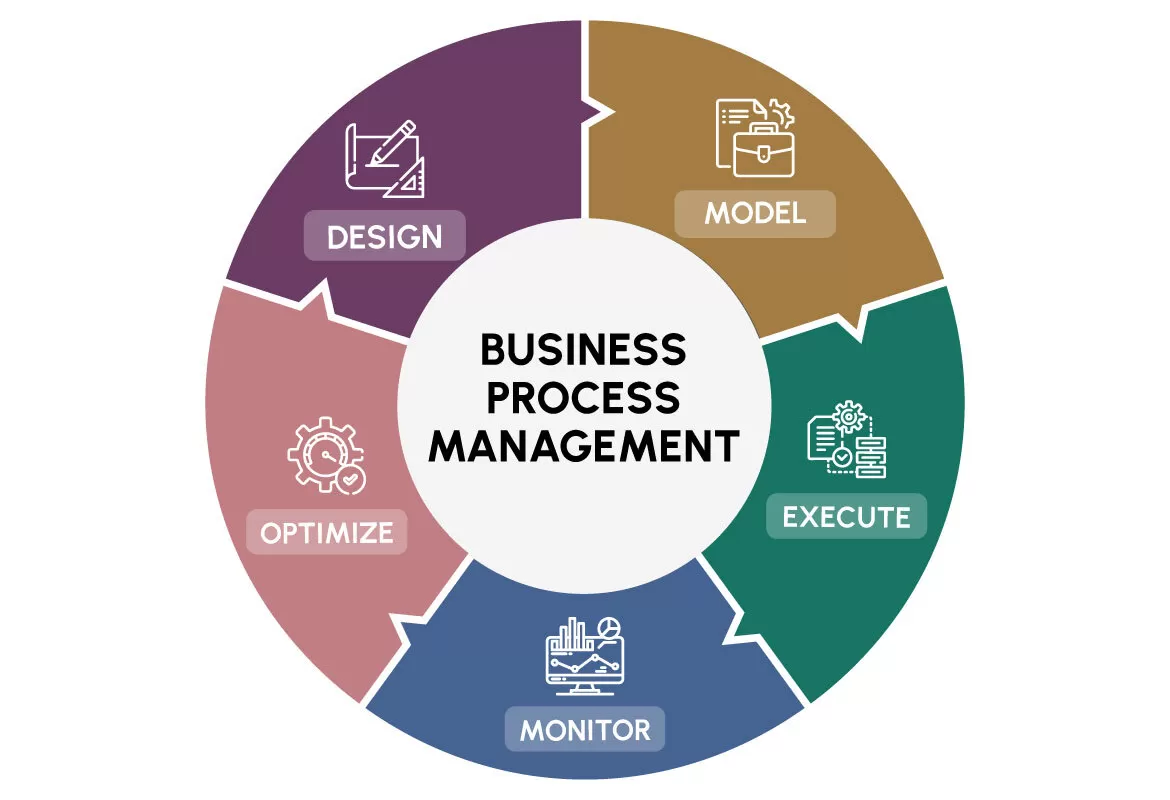
BPM (Business Process Management) and BPA (Business Process Automation) are both important aspects of optimizing business operations, but they serve different purposesand are not interchangeable terms. Let’s explore more about BPM vs. BPA and how they complement each other in navigating the complexities of modern business environments.
What is Business Process Management (BPM)?
Business Process Management is a holistic approach to managing and improving business processes. It involves the identification, design, execution, monitoring, and optimization of workflows and activities that make up an organization’s operations. Gartner defines BP as the coordination of people, systems, and information. BPM aims to align processes with business goals, enhance efficiency, and increase overall effectiveness. What is BPM and key aspects of BPM workflow:
a. Process Discovery: Identifying and documenting existing processes within an organization to understand how work is currently being done. The central principle of BPM is having a comprehensive understanding of all business processes or at least the one ones connected.
b. Process Design: Analyzing and improving existing processes or designing new ones to streamline operations and eliminate bottlenecks.
c. Process Execution: Implementing the designed processes and ensuring that they are followed consistently.
d. Process Monitoring: Using key performance indicators (KPIs) and other metrics to measure the performance of processes and identify areas for improvement.
e. Process Optimization: Continuously refining processes to achieve better results, reduce costs, and enhance customer satisfaction.

BPM workflows focus on the bigger picture of process management and emphasize the involvement of people, policies, and technology in optimizing workflows.
Why Business Process Automation (BPA) is part of BPM
Business Process Automation involves using technology to automate repetitive and manual tasks within business processes. Automation companies use technologies like robotic process automation (RPA) to speed up tasks but more importantly, it is combined with AI software like machine learning and Natural Language Processing to boost efficiency. BPA aims to reduce human intervention, minimize errors, increase efficiency, and accelerate the overall pace of operations.
Key aspects of BPA include:
a. Process Automation: Identifying tasks that can be automated and implementing software or systems to handle them without human involvement.
b. Workflow Automation: Automating the flow of information and tasks between different systems and departments.
c. Rule-Based Automation: Applying predefined rules and logic to guide the automation of processes.
d. Integration: Ensuring that various automation tools and systems work seamlessly together to achieve end-to-end automation.
e. Exception Handling: Defining processes to handle exceptions and errors that may arise during automation.
BPA aims to increase productivity, reduce operational costs, and free up human resources from mundane tasks, allowing them to focus on more strategic and value-added activities. Business Process Automation if not implemented properly might not give you the benefits you expect, here are 5 ways in which BPA can go wrong.
Having detailed what is BPM and how it differs from BPA, we also need to look at how one without the other is an anomaly
The Relationship Between BPM and BPA
BPM vs BPA is not pitting one against the other. BPM and BPA are complementary approaches with distinct concepts leading to efficiently managing business processes. BPM provides the strategic framework and human-centric perspective, while BPA offers the tactical tools and technology to streamline and automate tasks within those processes. Both are vital to make significant improvements in an organization’s operations, productivity, and competitive advantage.
BPM informs BPA: Before automating any process, it’s essential to have a clear understanding of the process itself. BPM activities like process discovery and design help identify which tasks are suitable for automation and which require human decision-making or intervention.
BPA enhances BPM: Business Process Automation is a powerful tool for executing BPM initiatives effectively. Automated processes can significantly improve efficiency, reduce errors, and facilitate faster response times, which contributes to the overall success of BPM efforts.
Continuous improvement: The combination of BPM and BPA enables continuous process improvement. BPM helps identify areas for optimization, and BPA helps implement those improvements efficiently.
If BPA is Outsourced then whose responsibility is BPM?
If only Business Process Automation (BPA) is outsourced, the responsibility for Business Process Management (BPM) remains with the company (the client). Let’s take a closer look at how this scenario works:
When a company decides to outsource BPA, it means they delegate the task of automating specific business processes to an external service provider. The outsourcing partner will be responsible for implementing the necessary automation technologies, software, and tools to streamline and optimize the identified processes.
The BPA outsourcing partner typically takes care of:
- Analyzing the processes: The BPA outsourcing partner will work with the client to understand the existing processes that need to be automated. This involves documenting the current workflows, tasks, and decision points.
- Automating the processes: The outsourcing partner will use automation technologies to design and implement the automated workflows. They will create rules and logic to guide the automation process and handle exceptions.
- Integration: Ensuring that the automated processes integrate smoothly with the existing systems and applications used by the client.
- Testing and Quality Assurance: Thoroughly testing the automated processes to ensure they function correctly and meet the client’s requirements.
- Support and Maintenance: Providing ongoing support and maintenance for the automated processes, ensuring they continue to run efficiently and effectively.
When BPM is not outsourced but retained by the Company:
When only BPA is outsourced, the overall management and governance of the processes remain the responsibility of the company. The client retains control over:
- Process Design and Strategy: Deciding which processes to automate and defining the strategic objectives of the automation initiative.
- Process Improvement: Continuously identifying areas for process improvement and optimization.
- KPIs and Performance Management: Setting Key Performance Indicators (KPIs) and metrics to measure the success and impact of the automation efforts.
- Compliance and Risk Management: Ensuring that the automated processes adhere to regulatory requirements and company policies.
- Business Decision-Making: Making critical business decisions based on the insights and data provided by automated processes.
The client also remains responsible for the overall alignment of the automated processes with the company’s business goals and objectives.
Outsourcing BPA can benefit companies that lack the in-house expertise or resources to implement automation effectively. By entrusting BPA to a specialized automation outsourcing partner like iTech, the company can focus on its core competencies and strategic initiatives while leveraging the expertise of the external provider to enhance process efficiency and productivity.
It’s essential for companies to clearly define the scope and responsibilities in the outsourcing agreement to ensure both parties have a clear understanding of their roles and expectations. Communication, collaboration, and setting clear objectives are crucial to the success of outsourcing BPA or any other business processes. Companies should also consider the expertise and track record of the outsourcing partner in handling similar projects before making a decision.

